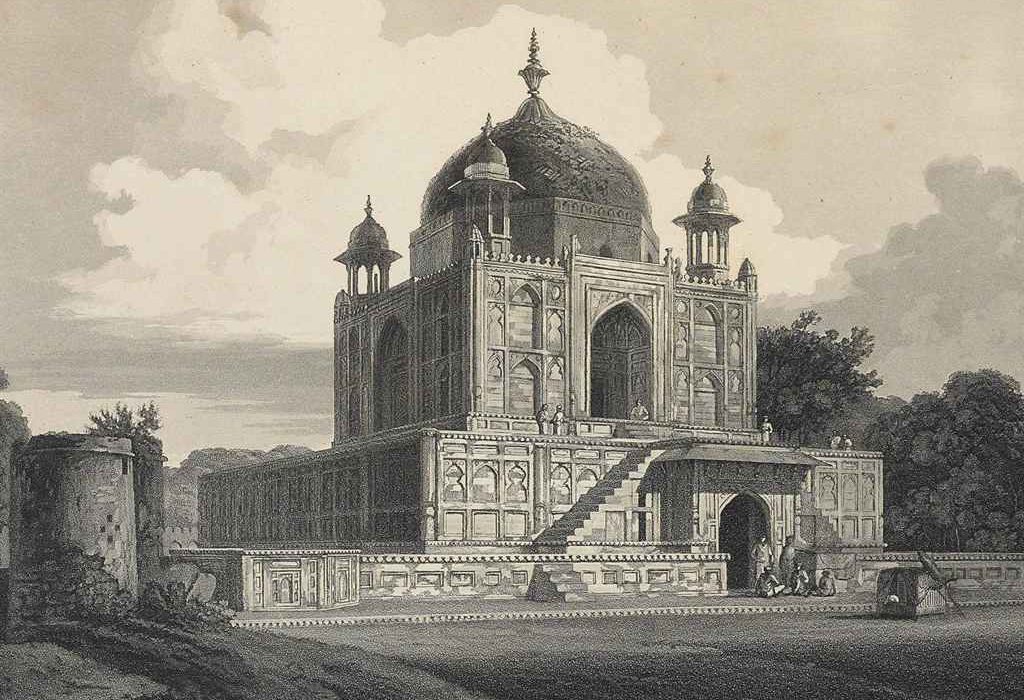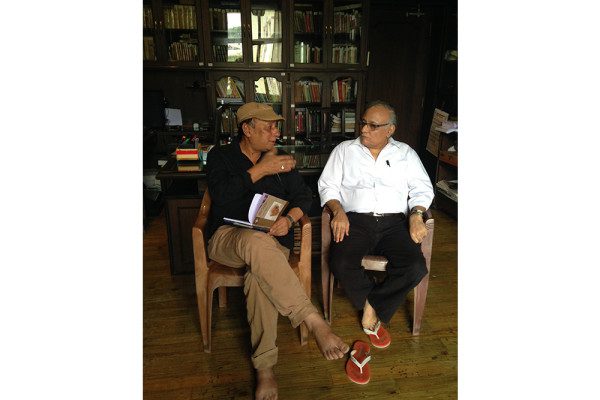Aritra Mukherjee extends the application of Berger’s concepts to the works of British painters like Thomas and William Daniell, thus justifiably moving beyond a cursory appraisal of the exquisite artwork to a deeper analysis of the painters’ compositional intentions.
In the opening essay of Ways of Seeing (1972), a volume of seven critical essays- four of which are a combination of words and pictures, while three are exclusively pictorial in composition- based on a BBC television series of the same name, it has been observed with a delightfully insightful succinctness that, “[w]e only see what we look at.” In the light of this asseveration, when one approaches the Pre-Independence paintings of Indian landscapes by British painters, it is perhaps not far outside the ambit of reason to be led, be it by way of either committed scholarly deliberations or fleetingly flirtatious indulgence of an idle curiosity, to ponder at what these foreign artists must have felt while “look”-ing at, probably for the first time, the scenes of a land, that until then had remained shrouded for them in an opalescent mist of almost mythic Oriental tales of prodigious wealth, luxury and magic. Similarly, it is also tempting to pose the question as to whether these paintings, besides aiming at the achievement of such overt objectives as artistic recognition and the concomitant affluence, also implicitly served to bolster certain pre-conceived notions and motives of British colonialism.With characteristic pithiness and sparkling lucidity of language and thought, Berger goes on to swiftly expound that the initial purpose of creating images was to evoke the “appearance of something that was absent”.
John Berger, along with four others who also contributed to the making of the book, defines “image” as a “sight”, or “a set of appearances”, “which has been recreated or reproduced”. As such “all images are man-made” and “preserved” through dissolution of the ties with their originary “place and time”. With characteristic pithiness and sparkling lucidity of language and thought, Berger goes on to swiftly expound that the initial purpose of creating images was to evoke the “appearance of something that was absent”. Eventually, it was realised that images not only survive their subjects but also conserve specific manners of looking at them. In other words, the image-maker’s perspective is as much an integral part of an image as the visual content. It is also noteworthy that Berger especially chooses the word “image”, thus emphasising the breath of the category, which not only encompasses photographs but also includes paintings with its fold. Hence, extending the application of these concepts to the works of British painters like Thomas and William Daniell, one can justifiably move beyond a cursory appraisal of the exquisite artwork to a deeper analysis of the painters’ compositional intentions.
In 1786, 36-year-old Thomas Daniell arrived in Calcutta along with William Daniell, his nephew of 16. With the consolidation and expansion of the East India Company’s influence in the subcontinent in the late eighteenth century, India attracted many European travellers, artists, scholars, and archaeologists: all sharing an adventurous spirit, streaked with a keen curiosity regarding the cultural practices, social setup, religious institutions, history, geography and architecture of the land, that had inexorably gripped their imagination for a long time then. Stimulated by the economic success and the phenomenal pace at which William Hodges was catapulted to celebrity following the publication of his “Select Views of India” from 1785-88, the Daniells came to India in pursuit of picturesque subjects that would cater to the British taste for the exotic. By the time they returned to England in 1793, the duo had toured extensively throughout the subcontinent, journeying along the Ganga from Calcutta to Srinagar and back, followed by two successive trips to Southern and Western India. Based on sketches made during the stay, they produced, besides several oil paintings, 144 hand-coloured aquatints collected in the monumental six-volume, “Oriental Scenery”, brought out from 1795-1808.
However, it is interesting to note that these architectural wonders are never portrayed in isolation. Rather, they are almost always depicted as submerged in a matrix of native activities.
The Daniells’ “Oriental” landscape paintings are consistently populated by palaces and forts, temples and mosques, mausoleums and newly excavated caves. Iconic monuments and places like the “Taj Mahel” at Agra, the “Dusasumade Gaut” in Benares, the “Jummah Musjed” in Delhi, the ruins of the Madurai Palace, the Brihadeshwara temple or “The Great Pagoda” at Tanjore, and the caves of Elephanta and Ellora: all provide substance to the Occidental vision of the exotically mystic East. However, it is interesting to note that these architectural wonders are never portrayed in isolation. Rather, they are almost always depicted as submerged in a matrix of native activities. Juxtaposed alongside these massive monuments, tiny turbaned figures of dhoti clad brown-skinned men, their torso sometimes wrapped in a light sheet of cloth, can be seen either standing or sitting on their hunches, with long sticks in their hands, lost in idle conversation; or a solitary cowherd on his way to some place, looming behind him the crumbling ruins for an ancient temple or fort; or better still, an occasional figure or two of women draped in sari standing near a well, an old temple in the background being slowly overtaken by the lush vegetation. These combinations are symptomatic of the English colonial power’s paradoxical vision of India.
While the splendid monuments bear testimony to a sophisticated civilisation, the rustic figures seem to suggest a race fallen from erstwhile glory into a regressive state of innocence and ignorance. The indifference of these native figures is indicative not only of their easy familiarity with the architectural pieces, but can also be read by the colonisers as the native’s innate inability to intellectually appreciate and financially maintain their historical legacy. Furthermore, the paintings do not in any manner register the natives’ reactions to the presence of the white-skinned strangers. It seems as if the Europeans were an invisible entity, observing the scenery without in any way affecting the flow of native life. However, when we come to look at the paintings depicting the genesis of the city of Calcutta, the most striking feature that captures the attention is the mixed crowd of natives and Europeans. No longer do we find two or three isolated natives spending their day in idle chatter. On the contrary, the sketches are teeming with various activities. New buildings conforming to the European aesthetic sensibility pose a striking contrast to the native architectural traditions. Similarly, broad straight roads, cutting each other at right angles, instead of narrow winding paths through dense vegetation; and the appearance of the horse and carriage alongside the more traditional, and slower, means of transportation via palanquins, bullock carts, camels and elephants: all seem to emphasise the arrival of a new, dynamic era under the superior rule of the white Englishmen.Furthermore, the paintings do not in any manner register the natives’ reactions to the presence of the white-skinned strangers. It seems as if the Europeans were an invisible entity, observing the scenery without in any way affecting the flow of native life.
However, when compared with the aquatints recording the earliest views of Calcutta, the Oriental landscapes seemed to hint at the decline of a glorious ancient native civilisation, whose future lay in the revitalising power of the superior British Empire.
In the combination of rusticity with mysterious oriental beauty one might justifiably recognise the awakening of romantic sensibility, which was making itself felt in Europe towards the closing decades of the eighteenth century. However, when compared with the aquatints recording the earliest views of Calcutta, the Oriental landscapes seemed to hint at the decline of a glorious ancient native civilisation, whose future lay in the revitalising power of the superior British Empire. But today, after almost seventy years of Independence from the British Raj, looking at Kolkata makes one humbly witness the grinding cycle of history. The fresh Palladian architecture, the horse and carriage, the broad roads are no longer as new and broad as they were during the British rule. In fact, looking at these early pictures of Calcutta, an uncanny feeling of familiarity and alienation emerges. While recognising some surviving features, one also needs to acknowledge the rapid changes obliterating many other aspects of that fledgling colonial city.


